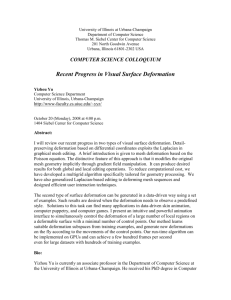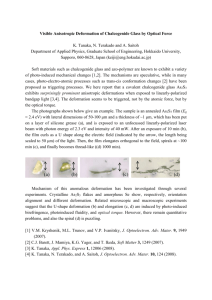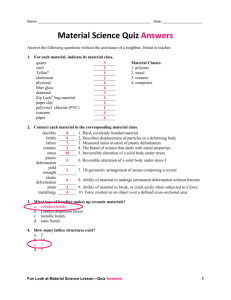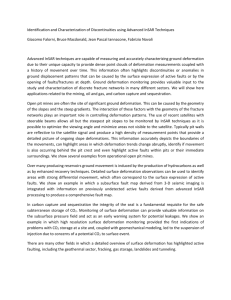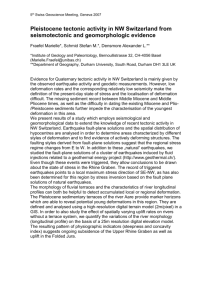jgrb16368-sup-0002-txts01
advertisement
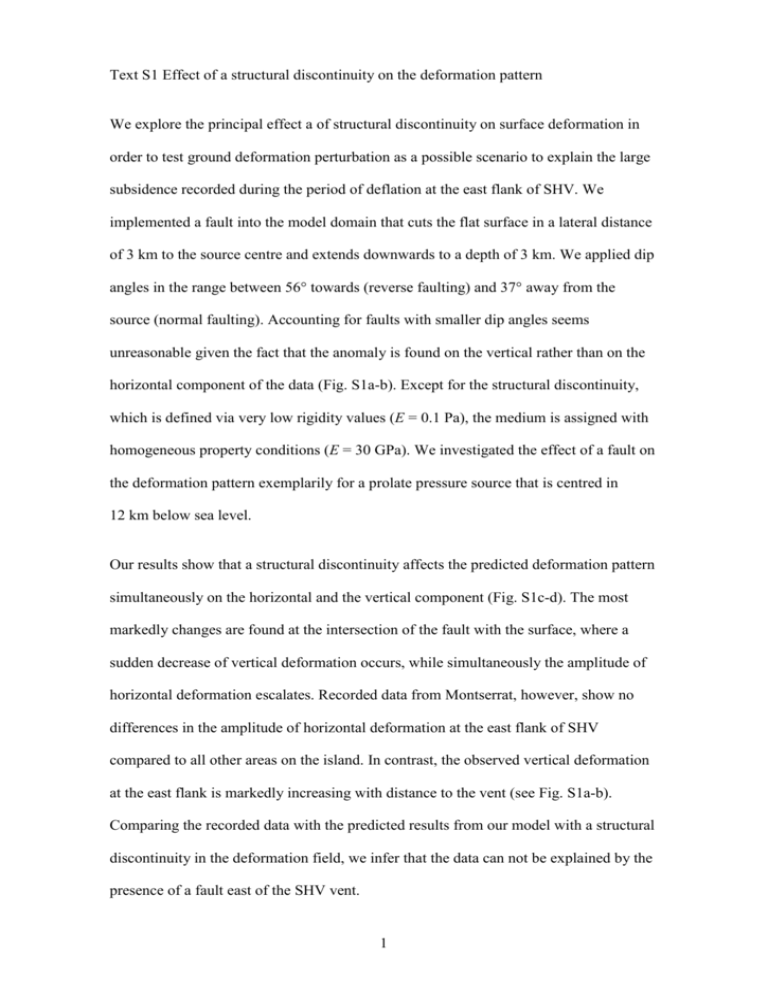
Text S1 Effect of a structural discontinuity on the deformation pattern We explore the principal effect a of structural discontinuity on surface deformation in order to test ground deformation perturbation as a possible scenario to explain the large subsidence recorded during the period of deflation at the east flank of SHV. We implemented a fault into the model domain that cuts the flat surface in a lateral distance of 3 km to the source centre and extends downwards to a depth of 3 km. We applied dip angles in the range between 56° towards (reverse faulting) and 37° away from the source (normal faulting). Accounting for faults with smaller dip angles seems unreasonable given the fact that the anomaly is found on the vertical rather than on the horizontal component of the data (Fig. S1a-b). Except for the structural discontinuity, which is defined via very low rigidity values (E = 0.1 Pa), the medium is assigned with homogeneous property conditions (E = 30 GPa). We investigated the effect of a fault on the deformation pattern exemplarily for a prolate pressure source that is centred in 12 km below sea level. Our results show that a structural discontinuity affects the predicted deformation pattern simultaneously on the horizontal and the vertical component (Fig. S1c-d). The most markedly changes are found at the intersection of the fault with the surface, where a sudden decrease of vertical deformation occurs, while simultaneously the amplitude of horizontal deformation escalates. Recorded data from Montserrat, however, show no differences in the amplitude of horizontal deformation at the east flank of SHV compared to all other areas on the island. In contrast, the observed vertical deformation at the east flank is markedly increasing with distance to the vent (see Fig. S1a-b). Comparing the recorded data with the predicted results from our model with a structural discontinuity in the deformation field, we infer that the data can not be explained by the presence of a fault east of the SHV vent. 1 A2 Influence of topography and lateral heterogeneities Differences in elevation of the cGPS site locations with respect to their radial distance from the source centre can be accounted for in a first approximation when applying a volcanic slope of 2° (0.4 km height, 11 km length). We implemented the simplified topography into our model in order to compare the results with the predicted deformation for the flat surface model and thus, to have a control on the influence of first-order topographic effects. A 3-D image of the P-seismic velocity to a depth of 5 km beneath Montserrat [Shalev et al., 2008] revealed a zone of dense material with E = 60 GPa that is located beneath the centre of SHV. This zone is of oblate geometry with a radius of approximately 2 km, extending between 1.5 and 3 km depth. We performed a model that accounts for this observation as well as for the compliant material in the shallow magma chamber (sphere with a radius of 1 km, centred at 6 km depth) that is constrained to E = 18 GPa. Our results allow us to quantify the influence of second-order heterogeneities on ground deformation. We exemplarily tested the influence of topography and lateral heterogeneities on ground deformation applying a slightly prolate magma chamber that is centred at 12 km below sea level (i.e., source parameters inferred from analyses of ground inflation data). We further applied crustal heterogeneity as deduced from the P-wave velocity profile. We found that accounting for topography does not affect the vertical deformation pattern, but yields an amplification of horizontal deformation, with an increase of the ratio Urmax/Uzmax of 0.05 (Fig. A2). The additional application of lateral heterogeneities results in a very minor increase of (i) the wavelength of the vertical deformation as well as (ii) the amplitude of horizontal deformation (increase of Urmax/Uzmax by 0.02; Fig. A2). The differences in the predicted deformation pattern 2 correspond to a pressure source with a slightly less eccentric geometry, when additionally applying topography and second-order heterogeneities as opposed to flatsurface models with first-order mechanical heterogeneities only. However, the difference in eccentricity a/c of the sources inferred from both model approaches is about 0.1 and has thus only minor impact on the results, given the uncertainty in the data. 3

